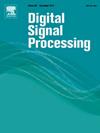FNAT-Net: Feature space-based compression-aware adaptive thresholding network
IF 2.9
3区 工程技术
Q2 ENGINEERING, ELECTRICAL & ELECTRONIC
引用次数: 0
Abstract
In recent years, significant progress has been made in image compression sensing (ICS) through deep learning techniques. Deep Unfolding Networks (DUN) transforms the iterative reconfiguration process into an end-to-end deep neural network, improving interpretability and performance. However, traditional algorithms are limited to processing information in pixel space, missing the potential advantages of feature space. Additionally, most DUN are constrained by fixed input-output mirror structures that restrict information flow and lack adaptability due to their use of a fixed threshold for soft shrinkage operations. To address these limitations, we propose a novel feature space-based compression-aware adaptive threshold network (FNAT-Net). The supplementary information (FI) is utilized to enable FNAT-Net to perform fusion processing across both the pixel and feature domains, mapping a two-step approximate gradient descent algorithm from pixel to feature space. Furthermore, this paper introduces an effective enhanced Multi-Layer Perceptron (MLP) adaptive soft-thresholding strategy. This strategy enables FNAT-Net to address L1-regularized neighbourhood mappings with content-aware thresholds. FNAT-Net outperforms state-of-the-art methods, demonstrating superior performance across a wide range of scene changes and noise conditions.
求助全文
约1分钟内获得全文
求助全文
来源期刊

Digital Signal Processing
工程技术-工程:电子与电气
CiteScore
5.30
自引率
17.20%
发文量
435
审稿时长
66 days
期刊介绍:
Digital Signal Processing: A Review Journal is one of the oldest and most established journals in the field of signal processing yet it aims to be the most innovative. The Journal invites top quality research articles at the frontiers of research in all aspects of signal processing. Our objective is to provide a platform for the publication of ground-breaking research in signal processing with both academic and industrial appeal.
The journal has a special emphasis on statistical signal processing methodology such as Bayesian signal processing, and encourages articles on emerging applications of signal processing such as:
• big data• machine learning• internet of things• information security• systems biology and computational biology,• financial time series analysis,• autonomous vehicles,• quantum computing,• neuromorphic engineering,• human-computer interaction and intelligent user interfaces,• environmental signal processing,• geophysical signal processing including seismic signal processing,• chemioinformatics and bioinformatics,• audio, visual and performance arts,• disaster management and prevention,• renewable energy,
 求助内容:
求助内容: 应助结果提醒方式:
应助结果提醒方式:


